PRIMER
Great design is human centric, makes people pay attention to the interaction, without being distracted by the interface.
Great design instantly draws the user’s attention to the intention of the interaction, blurring everything else – including the interface that’s enabling that interaction.
If your product or service draws attention to how beautiful or ugly the user interface is – well, it’s most likely not well designed. On the other hand, if your product or service draws attention to the intended interaction between the user & your brand, makes the user take action like its ‘obvious’ – you’ve most likely nailed the design.
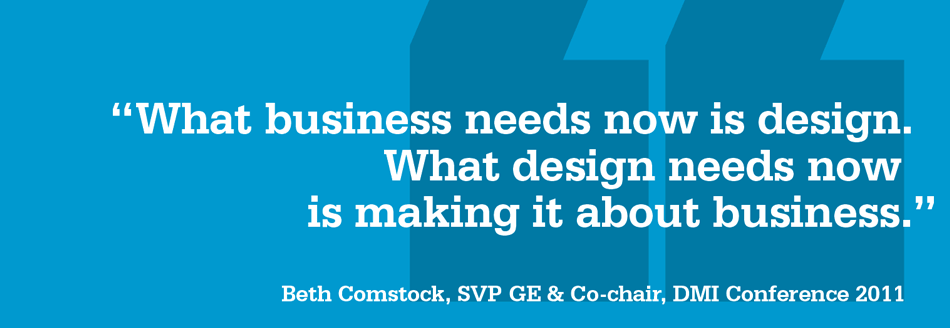
WHAT IS DESIGN THINKING?
Design thinking is a human centered approach to design, starting with observation & empathy. This approach is fundamentally transforming how a business goes about designing products & services to fulfill unarticulated human needs, inspiring birth of new organizational design & culture, giving rise to disruptive practices and strategies.
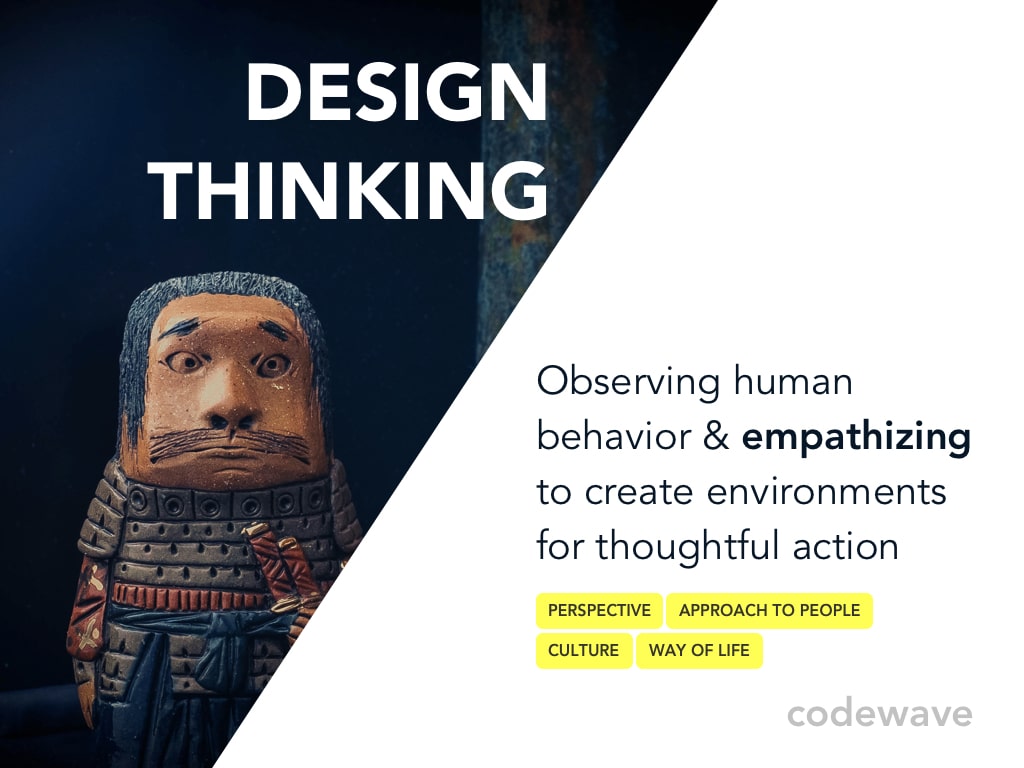
A business gains unique competitive advantage when it’s able to observe & articulate complex human behavior & unsaid needs; and is able to design unique consumer journeys & experiences to fulfill those needs, creating opportunities for high adoption of the experience and high profit margins. When done consistently, ‘Design thinking’ becomes a culture, that places empathy at the very core of all interactions of the business with it’s customers, employees, partners & everyone in it’s ecosystem. A business that becomes a ‘Design thinking’ practitioner, continuously evolves the practice, sets global benchmarks and creates tools for everyone to master.
DESIGN THINKING: WHAT’S THE ROI?
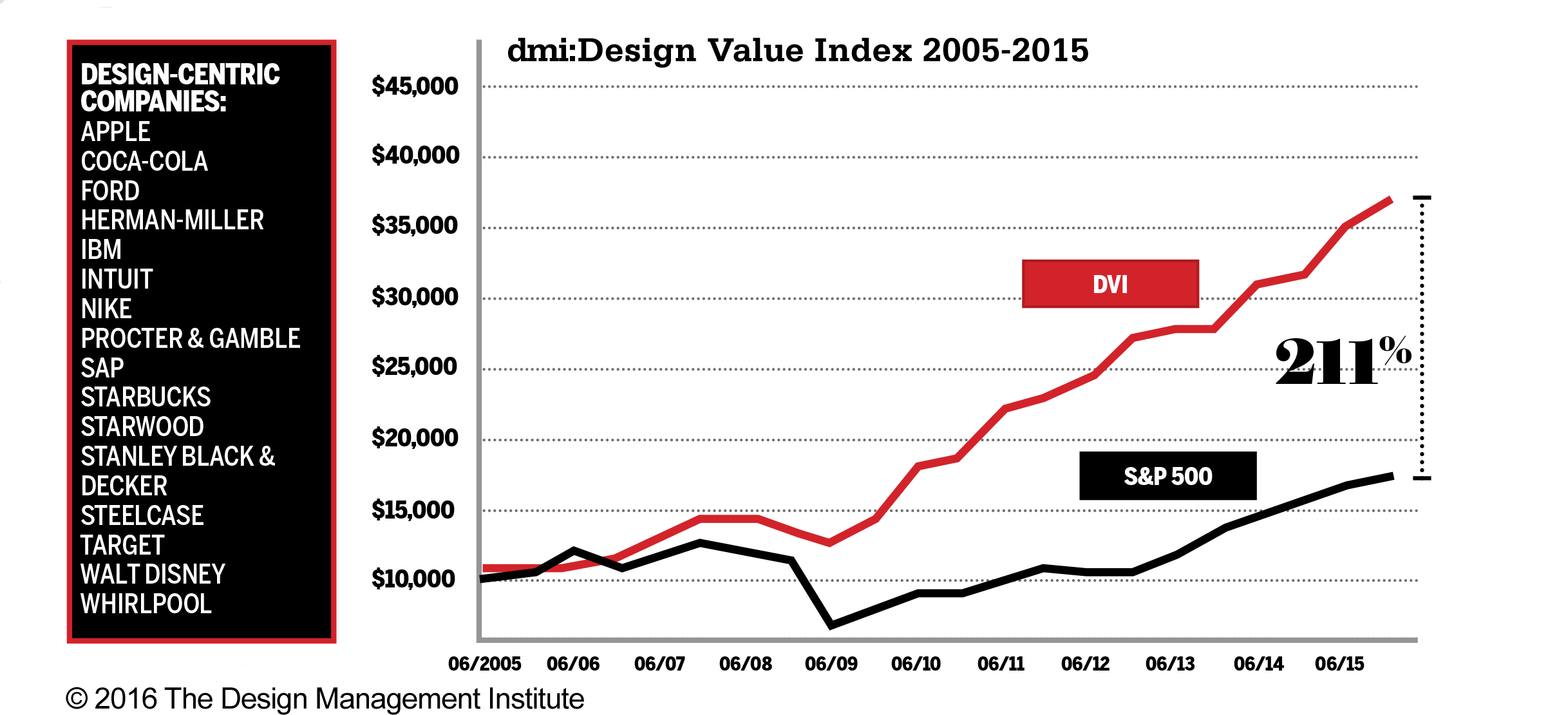
Every 10,000 dollars invested in a “Design obsessed” business is observed to yield over 200% greater returns than the same investment made in a “Design jugaad” business that cuts corners.

Businesses like Apple, Airbnb, Nike, Citibank have proven to be highly successful in consistently innovating and ‘Design thinking’ as a culture has proven to be a fundamental enabler of this success. ‘Design centric’ organizations don’t cut corners, when it comes to designing their business offering – a product or a service, as it is equivalent to compromising on your brand’s non-negotiable values for a temporary constraint (time, cost or resources), which could directly affect user adoption & engagement.
BAD DESIGN 1: UGLY INTERFACES
Look at the parking sign below. Imagine you are driving back home after a busy day at work and need to stop by a store to buy groceries. Would you be able to interpret the message on these boards to decide if you can park or not? This is an example of a design that involves a high cognitive load.

Things that don’t work
- Busy visual
- Information Overload
- Needs high mental processing power
- Confusion
- Ambiguity
How about this one instead?
Designed by: Nikki Sylianteng
What organizational behaviors do you think could lead to listening to human needs better?
We hope you found this helpful.
If you’re looking to implement a strong design thinking practice for your organization or for a project – write to hello@codewave.in. Codewave has delivered many sessions & workshops to promote design thinking in India and sensitize organizations on Multisensorial design, to meet the needs of an ageing world. We are recognized as a Top Design Company on DesignRush.
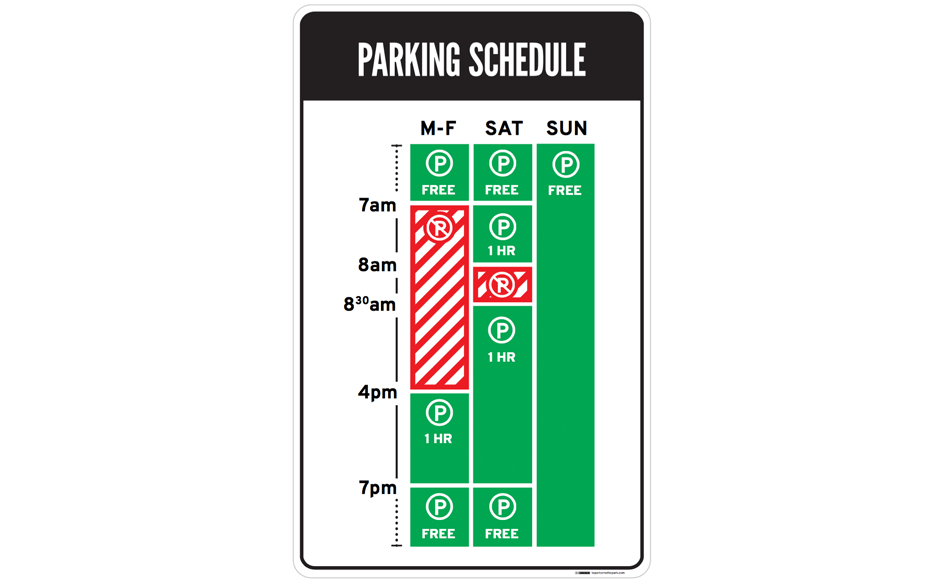
Things that work
- Minimal visual
- Lesser cognitive load
- Message conveyed through colors
- Stripes used for color blind users
- Clarity
- Easier decision making
BAD DESIGN 2: BEAUTIFUL INTERFACES
Can a beautiful interface be bad design? Let’s now take a look at an opposite – an example of a beautiful interface, that carries an animation without a purpose.

Question – is it adding value or distracting the user at a moment where user is only looking to engage in action?
However neat and beautiful the interface is, when the interface competes to seek greater attention than the ‘interaction’ itself – it’s not great design.
Now consider a ‘micro-interaction’ – an animation with purpose, like in below example.

Things that work
- Animation calls attention to users interaction on screen
- Animation only to convey key information affecting next user action
GOOD DESIGN: TAKEAWAYS
- Observe your subject keenly
- Identify the real need
- Design only to meet the need
- Deliberate with your design team on eliminating the unnecessary
- Check if user interacts without being distracted by the interface
- Continuously learn, iterate and evolve your solution based on user feedback
DESIGN THINKING – THE HOW
Design thinking is about empathizing with your user, observing an unsaid need and expectation, fulfilling it in the most ‘obvious’ way that feels simplest to the user. Design thinking starts with empathy and empathy starts with observation.
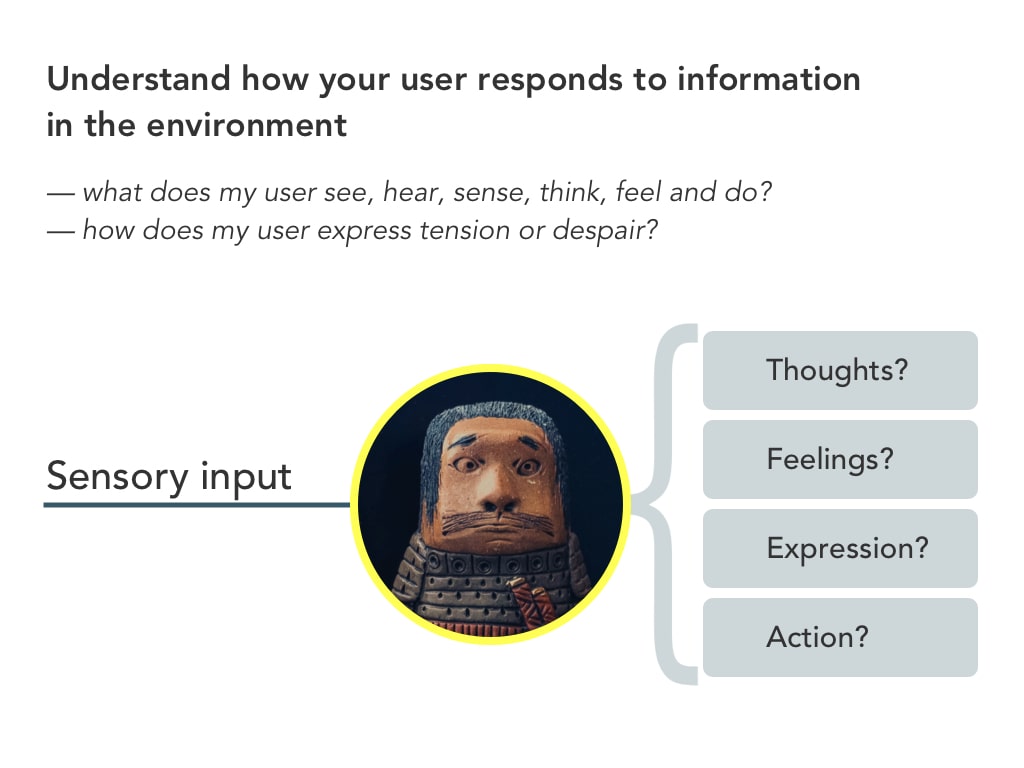
When you’re observing the subject, be self aware of your own biases blinding you from capturing the observations effectively. For example, when you’re observing a 30 year old mother to design a new service for mothers, your own thoughts & emotions as a mother may interfere with what you see, while observing your subject. It’s important to be aware of your cognitive biases, so it doesn’t affect the empathy exercise.
Once you identify the need, you can iteratively prototype your solution and show it to your users to get early feedback, Through iterative progression and learning, you continuously evolve your solution.
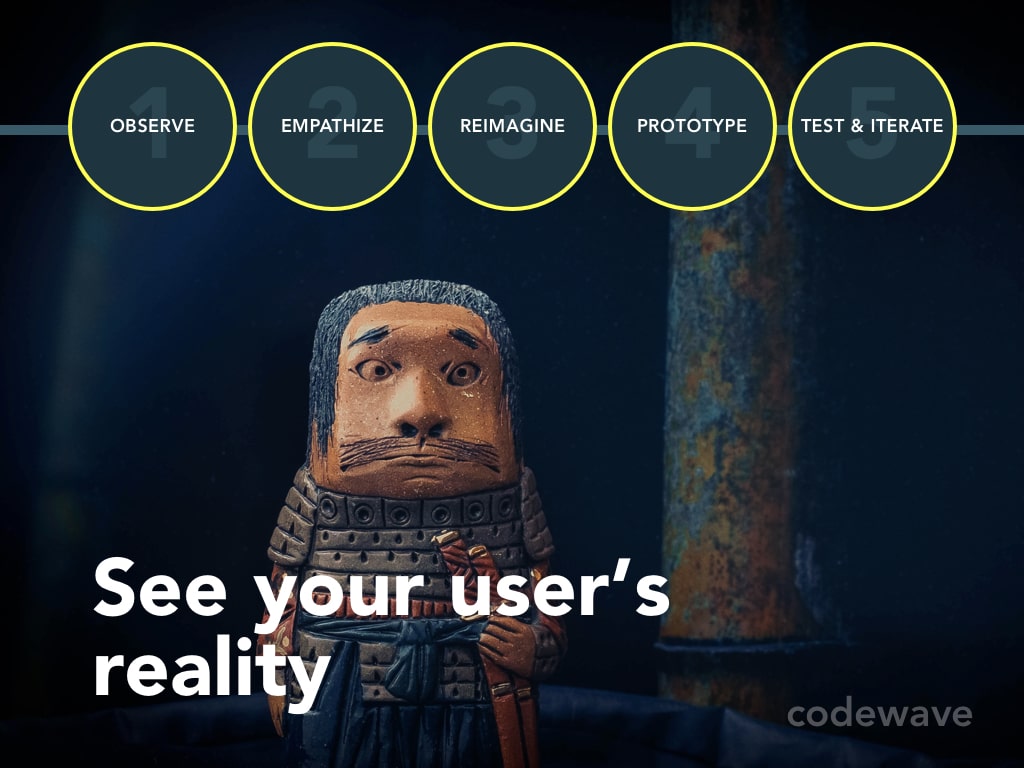
The solution should also be a self sustainable business and achievable by the technologies available today.
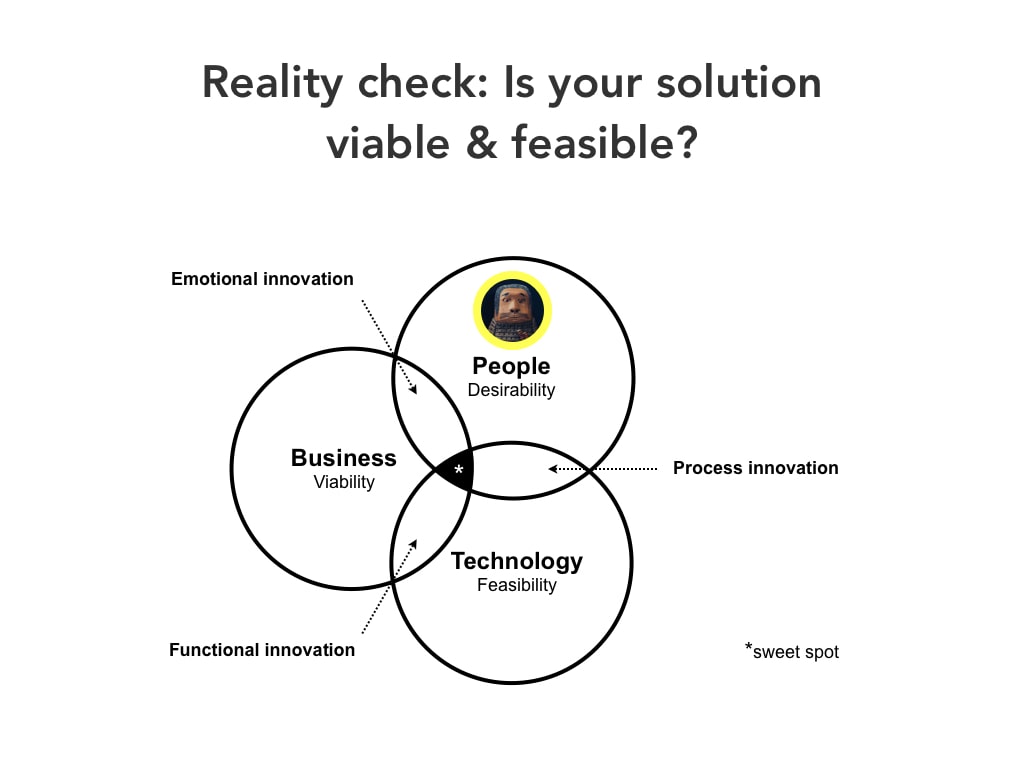
DESIGN THINKING SUCCESS #1: AIRBNB
In 2009, Airbnb was on the verge of shutting down – barely making $200 per week. When the founders looked at the how users were using the platform, why bookings were not happening and what added friction for a user to proceed with a booking – a pattern emerged revealing a human behavior – “lack of clarity, fear of the unknown”.
Users were not able to see what they were paying for. The photos of properties were not of high resolution as hosts took photos on their low resolution phone cameras and uploaded them to list their property. Also, Airbnb had worried about “scaling” to multiple cities fast, which made them push hosts to manage photos instead of Airbnb manually curating them. But they soon realized the cost they paid for low quality photos was high. Founders then, flew to New York – shot HD photographs of properties and uploaded them to the Airbnb app. To their surprise, bookings doubled immediately. Listening to their user’s frustrations, anxieties, defenses and motivations – Airbnb was able to successfully scale their business to multiple countries.
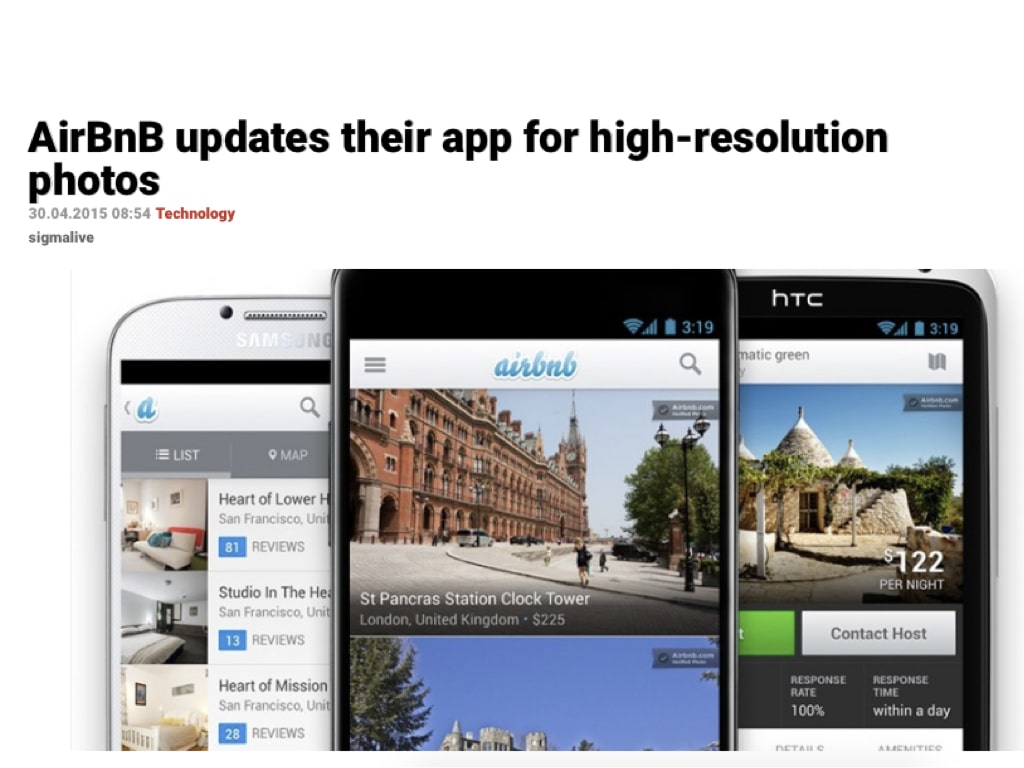
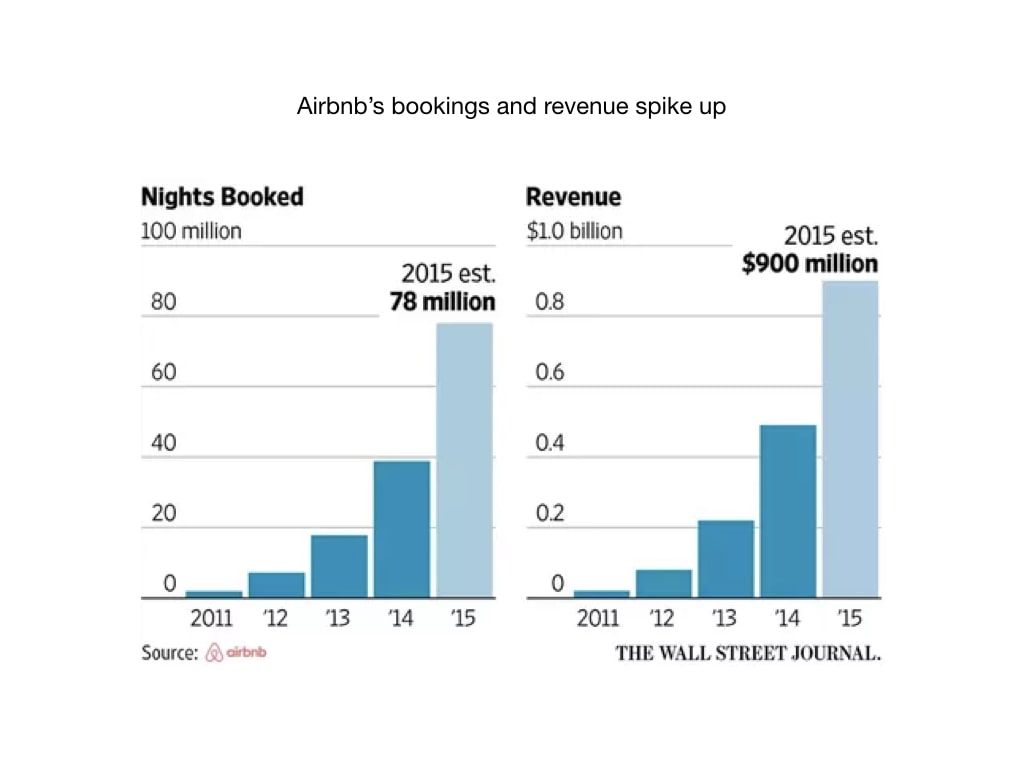
DESIGN THINKING SUCCESS #2: NIKE
Nike observed it’s users and noted a trend – athletes who loved comfort in their daily sports wear also loved style inspiration from luxury fashion brands. Nike’s design innovation team merged these two – the love for sports and fashion, functionality and inspiration and created products that users loved to own and sport.

Nike also observed in the middle-east, women were comfortable wearing a “hijab”. Nike decided to make sports more “comfortable” and closer to how women dressed at home or work, and launched the world’s first ever hijab. It’s Nike’s design thinking culture that pushed them to listen to their users more closely than their competitors ever did – that made them succeed as a unique, innovative sportswear brand for over 25 years.

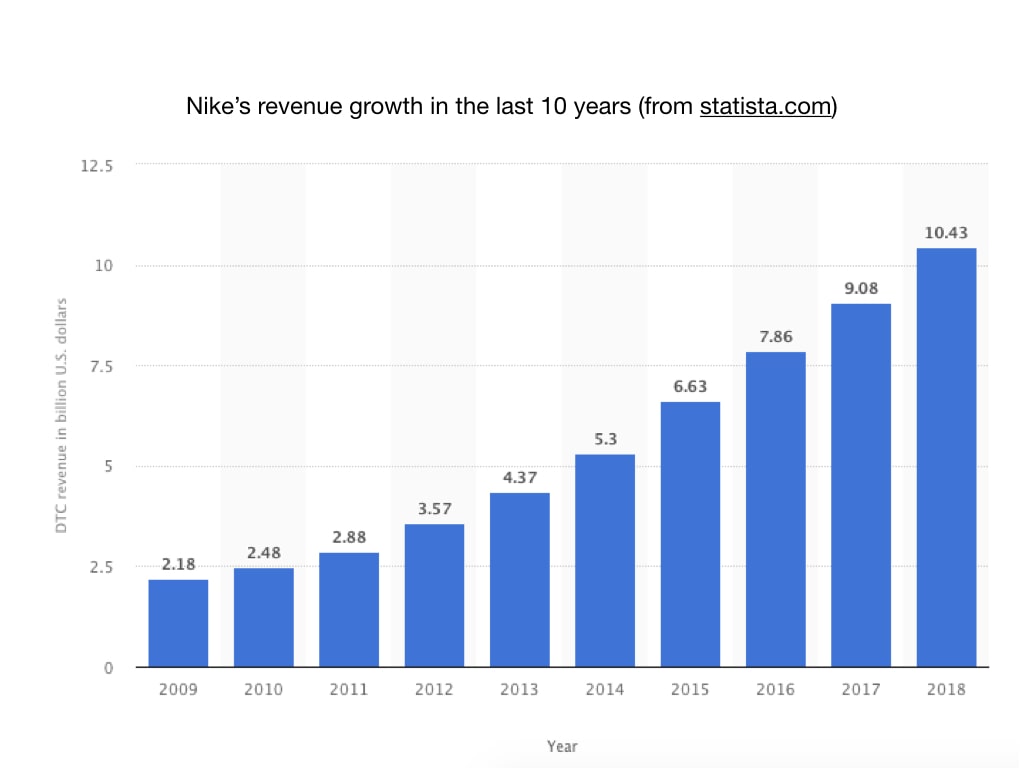
RE-DESIGN DISASTER: SNAPCHAT
Snapchat was once a highly popular social app among young users.

In 2018, the company released a re-designed version of the app, which mixed up professional content and friends’ content, making it hard to – find my friend’s recent stories that may soon disappear from my feed. This led to a 73% drop in user sentiments and about 1.3 million people signed a petition to bring back the old design.
“BLURRING THE LINES BETWEEN PROFESSIONAL CONTENT CREATORS AND YOUR FRIENDS HAS BEEN AN INTERESTING INTERNET EXPERIMENT.” – SnapChat’s founder
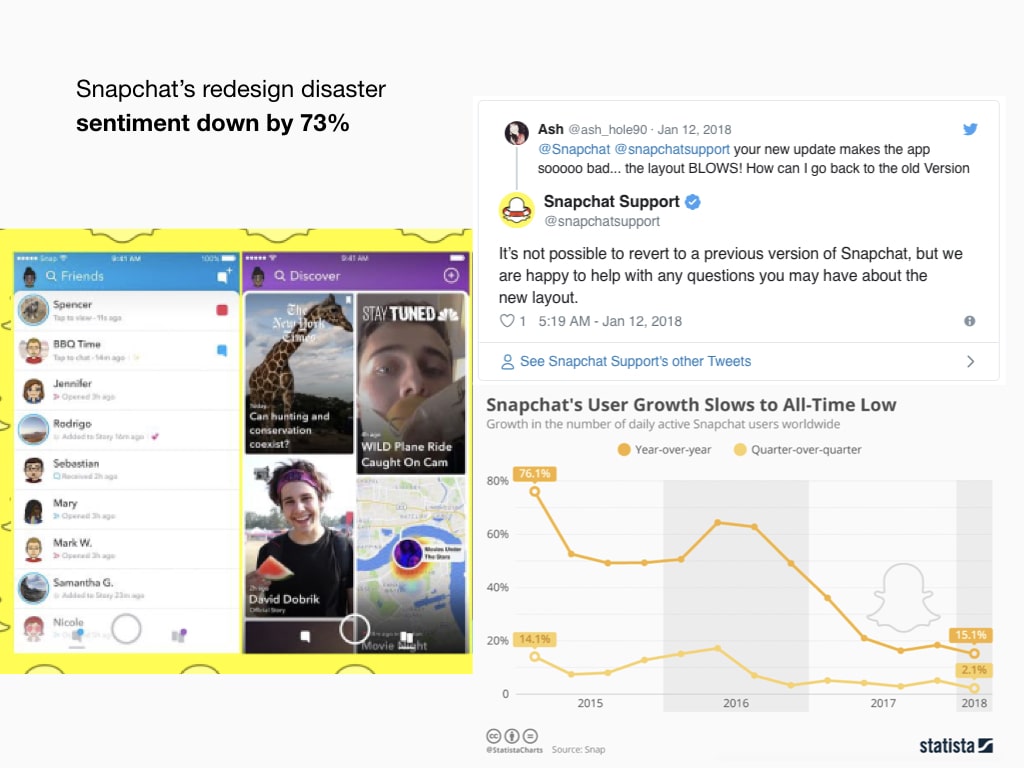
In the above 2 case studies (of Airbnb and Nike), we saw how continuously listening to your users can enable your business to consistently innovate and thrive. SnapChat’s redesign is an example of what not listening to your users can lead to.
DESIGN THINKING & DIGITAL TRANSFORMATION
Design thinking has been talked about for decades, however gained popularity in the recent years as Digital revolution transformed industries. Design thinking and Digital transformation is a powerful combination that can not only accelerate business innovation in today’s information age, but can also raise the bar for businesses, governments and societies to achieve greater socio-economic impact.
In an era, where Information is power – Design thinking pushes you to collect the most valuable information about users & events, that’s of strategic importance to give your business a unique edge over competition.
Design thinking drives your digital strategy, answering key questions below:
- What data to collect, when to collect and how to collect (Information),
- What analysis & predictions would be valuable (Intelligence),
- What aspects of user interactions can be automated (Automation),
- How can my business serve my user beyond barriers (Omnipresence).
DESIGN THINKING – CLOSING THOUGHTS
Design thinking changes the observer as much as it serves the observed. Look at your organizational culture, how you are currently going about designing products and services for your customers. Look at how you are currently working together as a team to design an experience for your customers or a policy for your employees. Is empathy & listening, a core part of your culture?
Codewave is a design thinking led digital transformation company enabling organisations with playful innovation using AI & ML, IoT & Edge, AR, VR, Cloud, Blockchain, and Data.







